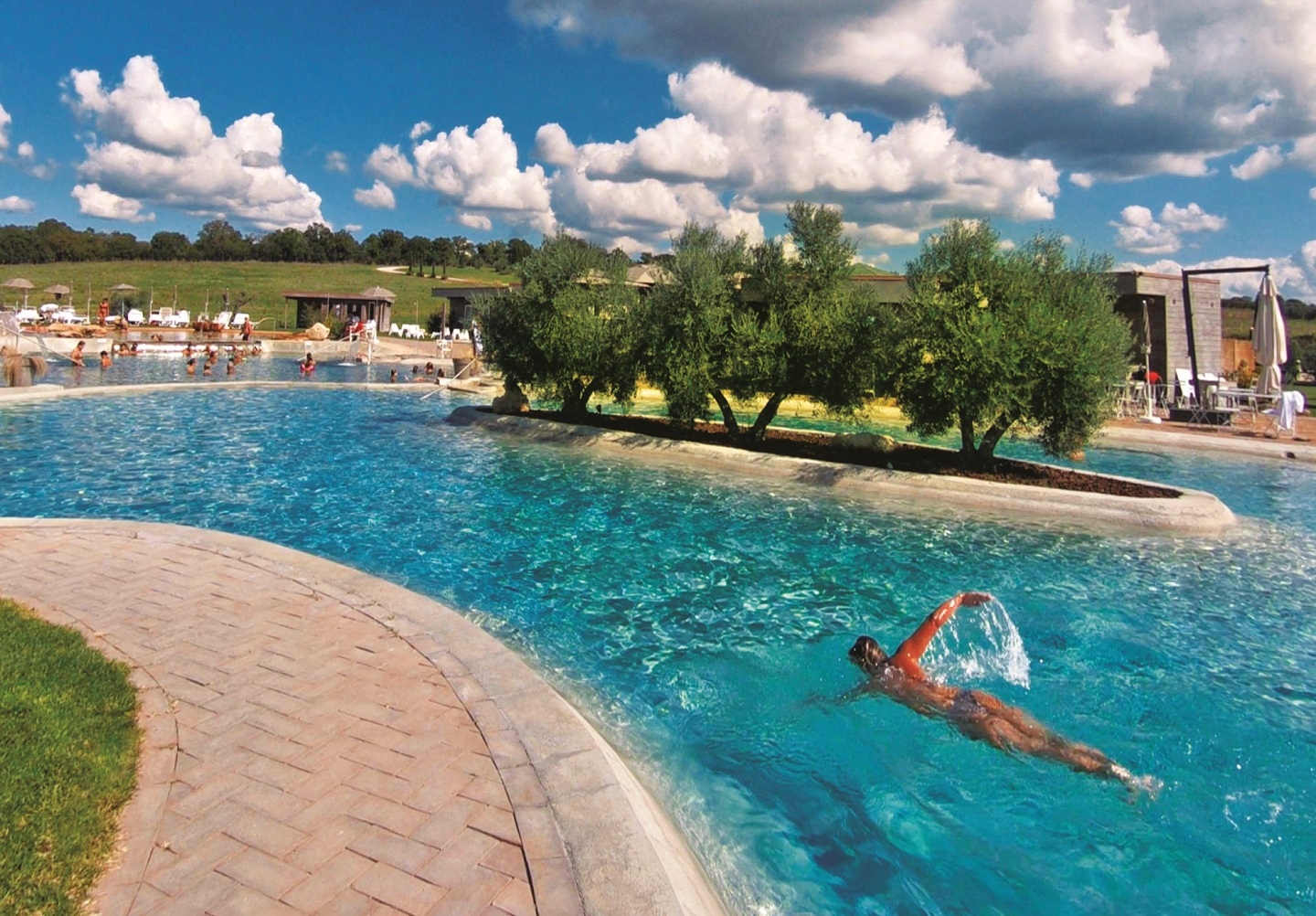
There are at least 380 spa establishments spread across 20 provinces in Italy (Photo: Terme di Vulci)
As Rome’s Centro Storico roars back to life, a placid pastime is picking up steam once again. On cold days, hot springs around the country seethe as sulphuric waters bubble to the ground, keeping bathers warm while they wait for attendants to serve cups of espresso balanced on a kickboard.
To the uninitiated, plunging into a basin of 58°C foul-smelling water may seem like slipping into a strangely enticing version of Dante’s Inferno in Canto XIV. Hard as it is on the nose, these natural Jacuzzis have shaped up to be a locus for social outings and spiritual healing ever since the Romans and Etruscans discovered them in the fourth century BC. So entrenched is this therapeutic ritual of mingled breath and sweat among health seekers that they flock to the region’s thermal baths (or thermae in the native language) and sanatoriums even at the height of summer. While giddy crowds in other parts of the world pack out patios, riversides, sandy beaches and ice-cream stands when the mercury spikes, the Italians are busy staying hot.
terme_di_vulci_3.jpeg
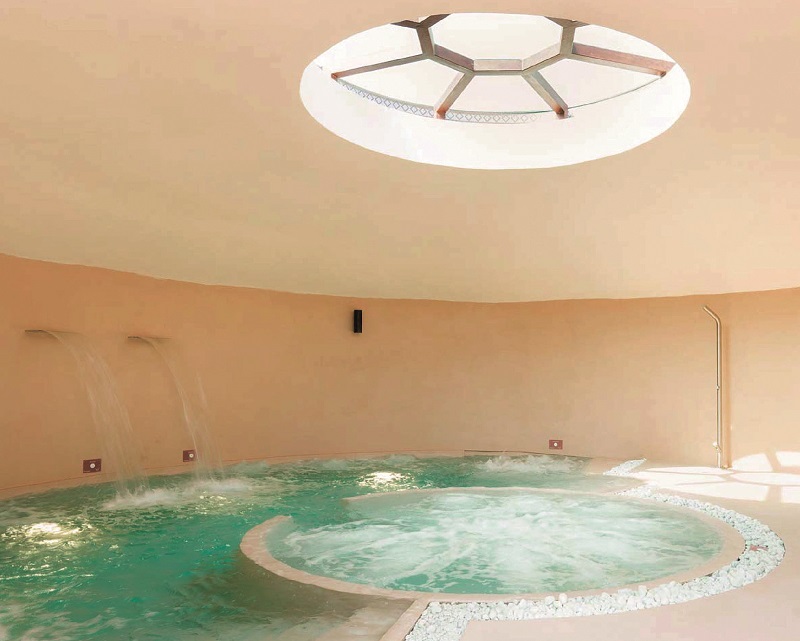
Like a palimpsest that peels back layers of discovery, the Eternal City’s gastronomical, architectural and historical charms stagger the mind any time of year. But once in a while, it is worth heeding the expression of “When in Rome, do as the Romans do”, even if they have developed a proclivity for smelling like rotten eggs. With a car, a little lesson in geography and a tolerance for sharing heat with half-naked strangers whose stories you would never know, you can partake of an elusive sensation of absolute calm and soak your aching body in minerals that purportedly cure everything from dermatitis to pneumonia. If these sumptuous healing grounds are good enough for popes and a gout-riddled Julius Caesar, they are most probably good enough for you.
For the thermal spring expert, each therme flaunts its own mineral makeup, attributable to the various concentrations of gases that individual water flows pick up on their way to the earth’s surface. For example, carbon treats various kinds of respiratory problems; sulphur alleviates skin ailments. With fabled baths flowing through the country and a populace eager to take a dip all-year-round, eco-resorts are luring locals and tourists alike by reimagining medieval thermal springs into temples of repose, offering amenities such as spas with a decidedly indulgent slant and all-inclusive stays that overlook idyllic views to subdue tired minds. There are at least 380 establishments spread across 20 provinces in Italy but a slice of paradiso — just right under the radar to avoid the crush of holidaymakers — could be yours, if you follow your nose. Here are a few restorative getaways to break out a good sweat.
Perks and recreation
Vegetables have long sown the seeds of history, just as how Spanish conquistador Hernán Cortés conquered the Aztec empire with tomatoes, or the way carrots were grown to honour William of Orange during the Dutch revolution. In Viterbo, Italy, a bathing culture was spearheaded by juicy asparagus. Farmers first discovered the fertility of the land when open spas, ensconced by archaeological remains of the Etruscan city of Vulci 3,000 years ago, spilled into the middle of fields and nurtured crops. It did not take long for Terme di Vulci to harness the carbonated hyperthermal waters in the region for balneotherapy to cure dermatological diseases.
terme_di_vulci_extra.jpeg
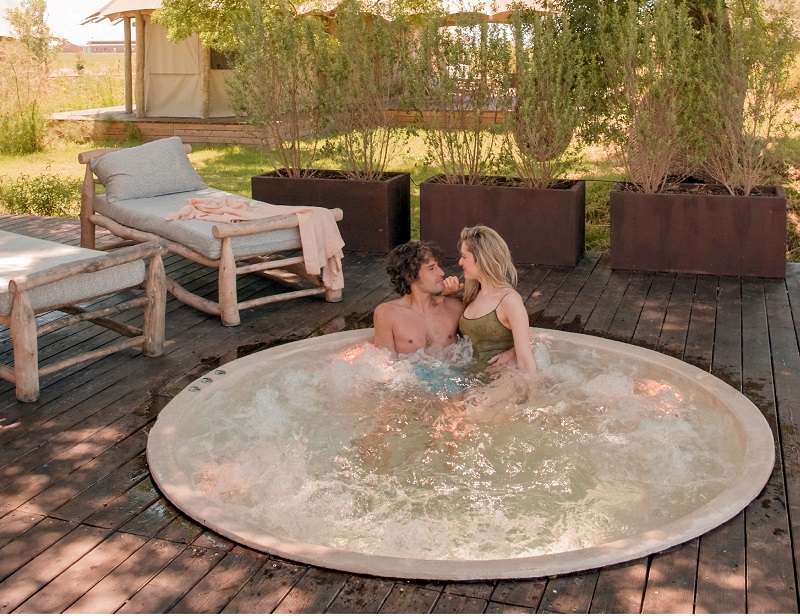
Unlike ordinary spas, Terme di Vulci is pitching for a new meaning of luxury through glamping as urban campers indicate a desire to commune with nature beyond a steamy soak in one of its four natural pools. Surrounded by a scenic patchwork of rolling hills and soothingly straight grids of olive trees that give way to tufts of pale green, this countryside thermal site with spacious tents or suites are dedicated to couples and families with a predilection for a touch of luxe in the wild. The notion of nodding off under the sky, stitched with a layer of stars, in the shadow of ancient pines and manicured lavender bushes sounds dreamy.
Terme di Vulci offers more than just an upgraded sleeping scenario as its strategic location, smack dab on the border between Lazio and Tuscany, creates an ideal base for exploring The Vulci Archaeological Park, the 6,000 ancient tombs in Necropolis of Tarquinia, and the glistening, crystal-clear sea of Capalbio. A trip to the sacred groves of olive oil producer Vulcino nearby presents a chance to educate your palate as the liquid gold here is cultivated from a steady diet of mineral-rich H20 and classical music by Mozart and Bach to stimulate growth.
terme_vescine_new.jpg
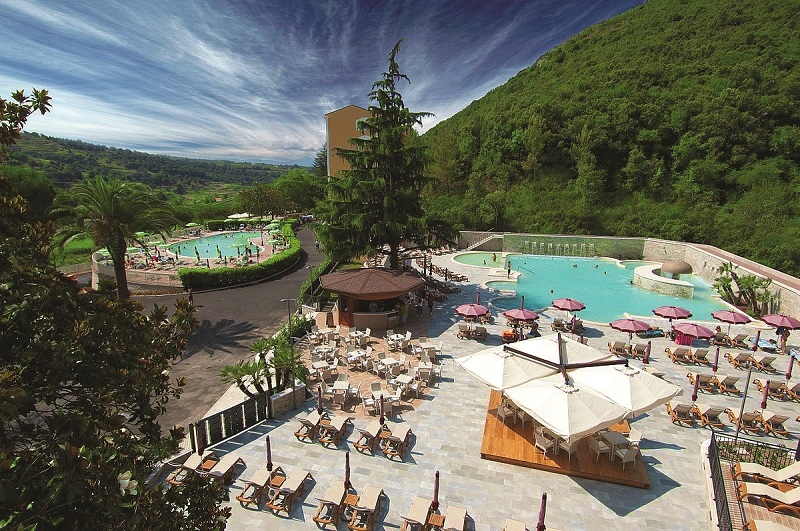
These days, rethinking wellness has meant expanding the focus from fountains of youth to other experiences anchored firmly in culture or food. Down south in Castelforte, Terme Vescine touts the magnificence of its 37 whirlpools, 16 waterfalls and hydromassage operated by water jets, but a main draw too is its on-site Restaurant Praeclarus, a venerable standby for course meals, wine and most definitely, cheese. The orchre walls and modern design scheme of the space reflect the direction of the kitchen, which serves dishes beyond the Roman culinary canon — palamida fish tartare, cuttlefish on violet grain, paccheri pasta with octopus and strawberry parfait with pineapple carpaccio are epicurean equivalents of a fashion-forward Italy.
Perched atop a hill adjacent to the Garigliano River, the 31ha property with 48 rooms plays its own game of peekaboo. Public pools, shrouded in a thicket of woods, masquerade as private nooks, allowing one to engage in a series of treatments in utmost exclusivity. Once you have been subjected to what feels like a primal tough-love beauty routine, join the horde of bathers with luminous skin at the bar where the invigorating scent of coffee hangs heavy. The resounding clank of ceramics and the hiss of steam that fogs up the ornate stained glass in the background can only mean a satisfying cuppa is underway.
vescine_new.jpg
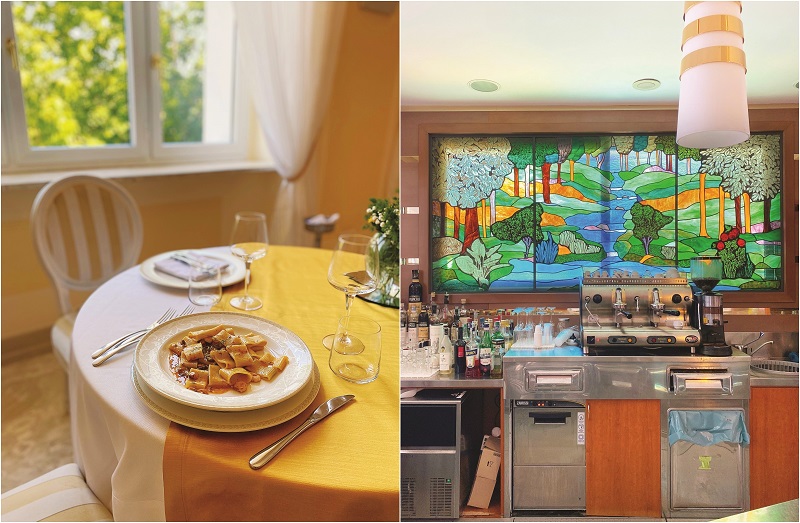
Cultural dipping points
With the heady sense of travel made new comes a chance to look again at some places with less jaded eyes. The picturesque town of Tivoli is home to two famous Unesco World Heritage Sites: Villa Adriana, the sprawling estate of Emperor Hadrian; and the 16th-century Villa d’Este, a hillside Renaissance garden sprawled across Lake Como.But most visitors often overlook an ancient thermal oasis — teeming with crude stone walls and stairs worn by armies of time — that has been carved into the matrix of the town. Acque Albule, fed by two neighbouring lakes, Regina and Colonnelle, was celebrated for its medicinal and anti-inflammatory values among physicians and wounded soldiers in the olden days.
acque_albule_new.jpg
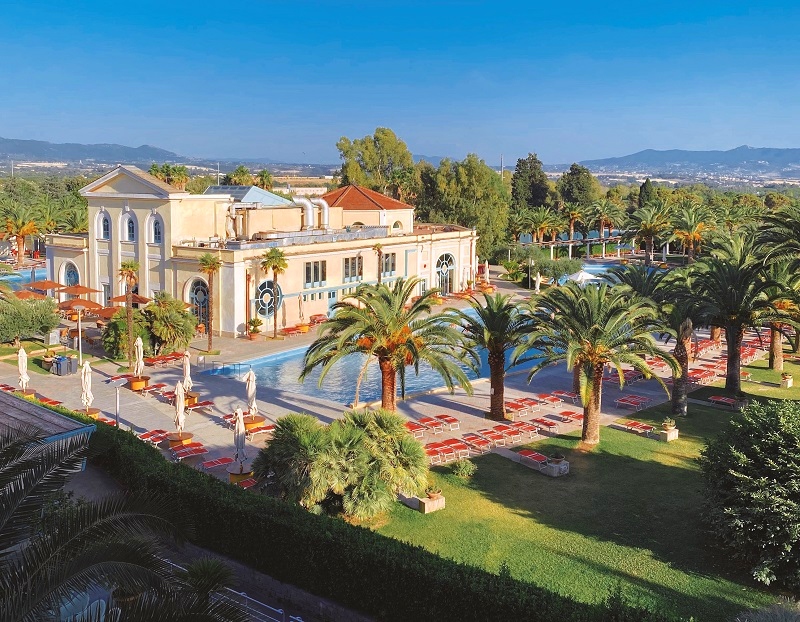
Fast forward to the radiant present, state-of-the-art spa technologies, alongside two new hotels — with health clinics and a PalaTerme (sports venue) within the premises — have rekindled interest among locals who wish to experience the full gamut of therapies such as hydrotherapy and steam inhalation under the supervision of a licensed doctor. Located just a 45-minute drive from Rome city centre, the burbling pools, which maintain a pleasant 23°C at all times, see unperturbed visitors wallowing under torrents of water that mimic mountain streams to pummel away aches. It is possible to wake up the next day with a baby-smooth glow biology has never given you, amazed at what little time in a sulphuric bath can do.
In Italy, the quixotic quest to seek out the miracles of water is hardly new, whether it is for bathing or quaffing. Acqua & Terme Fiuggi exudes an unquenchable star power, not just because its waters can be ingested directly from the fountains around the area, but eminent designer Luigi Moretti has managed to evoke the bygone as well as the modern so successfully that the spa has become a pilgrimage spot for architecture enthusiasts. Concrete canopies flank an imposing central staircase, which leads to a circular terrace reminiscent of the Pantheon and Roman baths.
fiuggi_new.jpg
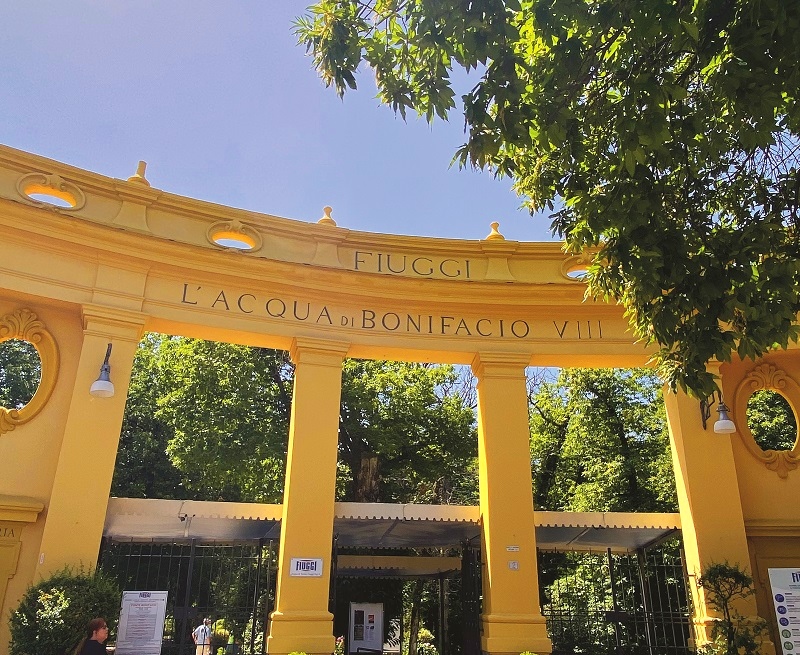
Ever since Pope Bonifacio VIII and sculptor Michelangelo Buonarroti lauded the depurative and diuretic benefits of Fiuggi water which treats kidney stones and bladder calculosis, variations of it, be it still or sparkling, have made its way around the world in convenient bottles. Having said that, local cognoscenti would still recommend you to take it straight from the source: Waters drawn from the Fonte Bonifacio VIII and Fonte Anticolana are potent tonics for the body and mind.
To travel again is to hear art and history whisper to you directly as you experience places in person. While you are in the area, take time to discover cobblestone streets and peeling plaster walls that are not aged by artificial means in the Old Town of Fiuggi, where hydrangea-clad terraces hug slopes high above the land and cling to the cliffs. Amid the tangle of alleyways, almost every turn reveals a mural that arouses a sensation of awe or reverence in the onlooker, or a makeshift bar and eatery that operates out of a house. If you squint hard enough, you could just make up the soap opera showing on someone’s TV.
fiuggi_town_final.jpg
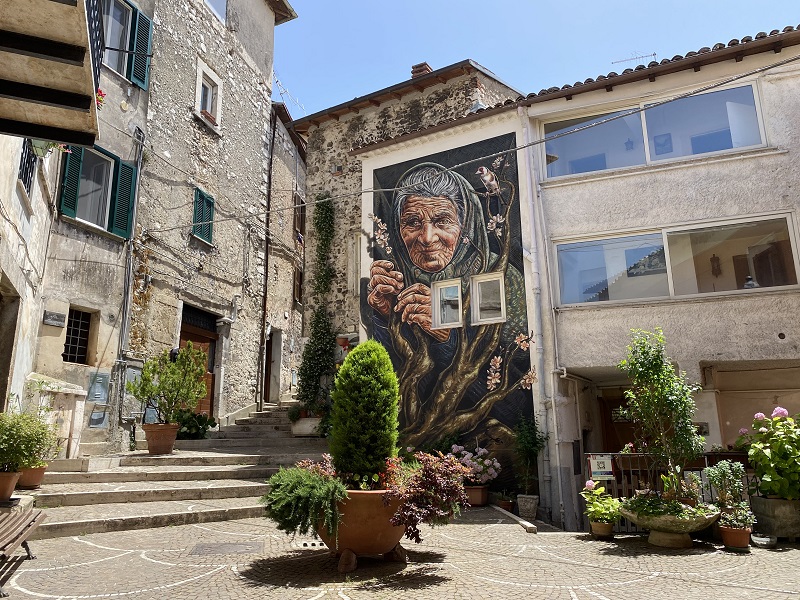
Mad about mud
A complete antithesis to a fancy modern spa, bath complexes in Italy sport the look not of a beauty parlour but a clinic. In Terme dei Papi, men and women of different shapes and ages tread their way across mosaic floors where they propel themselves on all fours and wriggle their hips in 58°C hyperthermal water derived from the Bullicame Spring. But the latter is not all they are here for — a volcanic pond with a clay bottom brews in the depths of the earth, churning out ready-to-use mud. The mature sludge, whether used for dermal detoxes or as cosmetic salves, draws out toxins, aids in exfoliation and acts as antiseptics to protect skin against free radicals.
terme_dei_papi_new.jpg
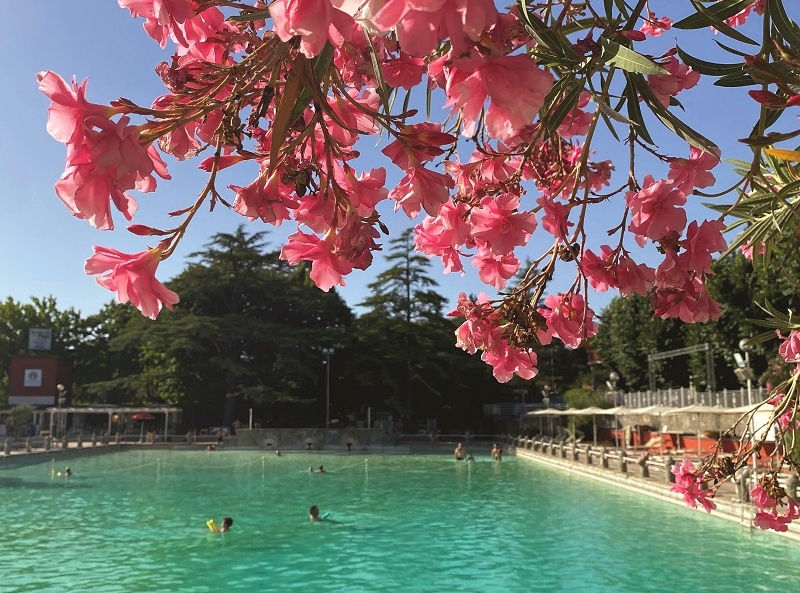
Just when you think your body, swaddled like a burrito, has been purged of every last drop of liquid, nurses may urge you to push your physical limits even further in the Natural Grotto, an underground cavern with a gigantic oven heated to 48°C that simulates a sauna to soothe inflamed respiratory tract and spur metabolism. If the heat gets to you, think happy thoughts — perhaps of a lotus flower, blooming out of muddy waters and rising above all suffering.
terme_dei_papi_2.jpeg
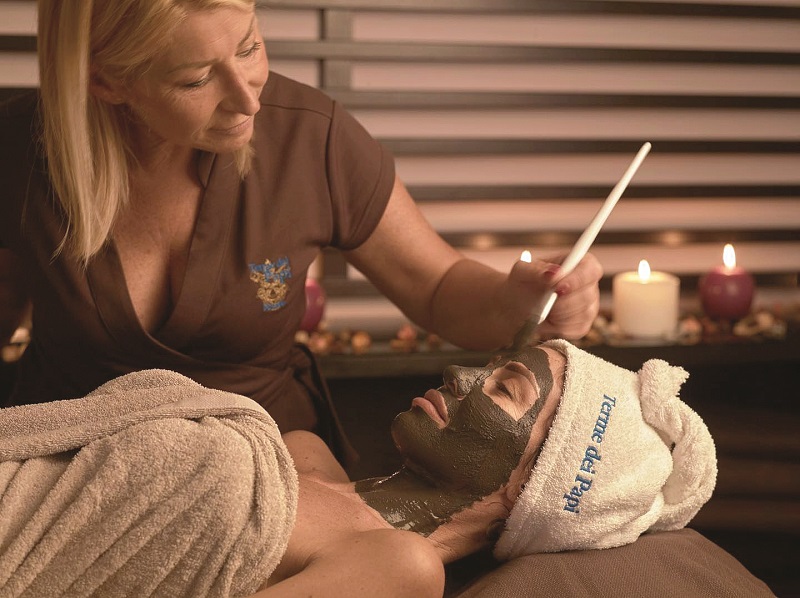
The country’s salubrious mud regimen also extends to Ferentino, where the first therme was built by Flavia Domitilla, niece of the Emperor Vespasian. Most travellers journey to this winemaking town to take in the sights of the Palace of the Gaudenti Knights (formed by militant monks who were appointed to act as peacemakers between Italian families) and churches dotting the craggy terrain, but it has recently gained reputation as a spa escapade. Terme Pompeo takes time to cultivate its brand of mud, a secret recipe that is ripened for a year before patients can harness its benefits that include lowering blood pressure and improving joint function.
Should you be open to the idea of being wrapped like a mummy in a steam chamber and snuggle in your cocoon of sweat, a mud bath treatment carries a psychological effect that brings you back to your first year of life, as if you are tucked in a motherly embrace. Ridding the goo off your body’s curves and crevices afterwards is a laborious undertaking but at the end of this gritty rubdown is a reward in a cooling pool, where you can — finally — raise a toast to the sunset with a champagne in hand.
terme_pompeo.jpeg

Sartorial trends may come and go in the Italian capital — where Fendi and Bulgari are headquartered; where the vast and winding city prides itself on imperial and papal pomp — but the pursuit of beauty around the elixir of water, an exercise that has transcended millennia, will never go out of fashion.
This article first appeared on July 25, 2022 in The Edge Malaysia.


